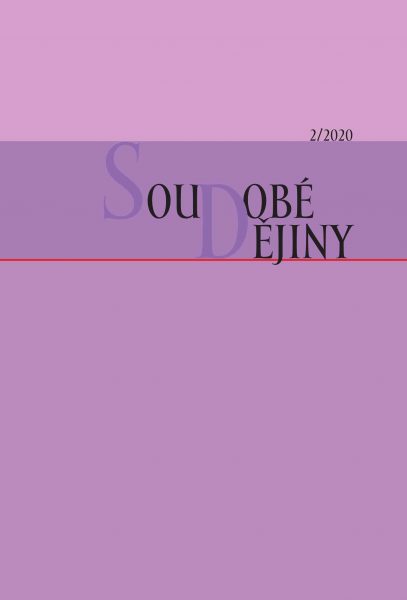Kliometrie a národní příběh
Cliometrics and the national story
Wehrmacht POWs as soldiers of the Czechoslovak foreign troops during the WWII
Author(s): Zdenko MaršálekSubject(s): History, Ethnohistory, Military history, Recent History (1900 till today), WW II and following years (1940 - 1949), Fascism, Nazism and WW II
Published by: AV ČR - Akademie věd České republiky - Ústav pro soudobé dějiny
Keywords: Cliometrics;quantitative methods;WW 2;Czechoslavakia;Czechoslovak army-in-exile;Wehrmacht;prisoners of war war;
Summary/Abstract: Using Czechoslovak units-in-exile during WW2 as an example, the study presents possibilities of using quantitative approaches in historiography; first and foremost, it suggests that numerical methods have a potential to examine even deeper contexts or such “soft” terms as prejudiced perception of “others” or processes of the formation ofimages of various historical phenomena in the historical memory. The author states that Czechoslovak units formed in the West between 1939 and 1945 were joined by almost 3,000 Czechoslovaks who had previously served for some time in the German Wehrmacht. They accounted for almost thirty percent of the numbers which these units had reached by the end of the war. Thus, in May 1945, almost every third Czechoslovak soldier had previously served in the German uniform. However, this fact did not dovetail too well with the ideological formation of a new national identity, based mainly on a notion of a “nationwide struggle” for freedom and a story of the age-long conflict with the Germanhood. The synergy of targeted and natural marginalization “from above” and “from below” subsequently resulted in an almost total suppression of this phenomenon in the collective memory of the entire Czech society. Czechoslovakia’s resistance abroad was depicted along strictly national lines and soldiers of Czechoslovak foreign units presented as typical representatives of the Czech and Slovak nations. Ex-Wehrmacht POWs do not receive the attention matching their numbers and importance even in published memoirs and recollections of resistance veterans. The author uses quantitative methods to establish whether the above phenomenon was due only to intentional marginalization or whether the “displacement” might be caused by other reasons as well. He provides a detailed mapping of the extent and chronology of the induction of these men into different units and shows that most of them started joining the Czechoslovak units only since the summer of 1944, and many of them were not sent to the frontline before the end of the war. This fact was undoubtedly reflected in their perception by veterans, who practically need not have met them and did not have a clue as to the importance of former Wehrmacht POWs as a source of manpower.
Journal: Soudobé Dějiny
- Issue Year: XXVII/2020
- Issue No: 2
- Page Range: 235-254
- Page Count: 20
- Language: Czech

